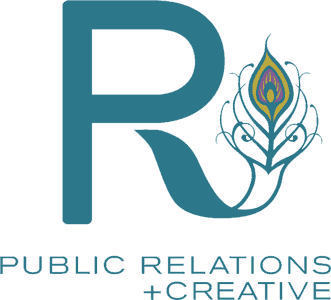With a proper strategy in place, marketing and public relations (PR) can work together seamlessly to improve sales, public opinion, customer loyalty, and so much more! Marketing and PR are distinct practices—marketing focuses on the selling of products, while PR typically focuses on managing and maintaining a brand’s reputation. When applied intelligently, they complement and can strengthen one another.
Keep reading to learn about the varied impacts well-thought-out marketing and PR plans can have on businesses.
1. Increase Brand Awareness

Traditional marketing placements like out-of-home advertising, social media marketing, and in-person events can help sell products. But on a secondary level, they also work to boost brand recognition. PR teams can play off this by complementing marketing efforts with related pitches and other media opportunities. Together, these strategies can boost brand recognition across target demographics and markets.
Brand recognition is far more important for businesses than most realize—according to Liana Zavo, writing for Entrepreneur, “Without publicity and reputation, a business cannot grow in its respective industry.” Brand recognition is not only important for making sales. It also helps maintain and gain market share and subtly impacts public sentiment surrounding a brand.
2. Promote Brand Values
Trust is the most valuable thing a company can possess. With improved brand recognition comes increased awareness of brand values. As such, intelligent marketing and PR strategies can ensure the general public has a comprehensive understanding of a company’s giving initiatives, mission statement, and brand values. These key messages bolster customer loyalty, enhance word-of-mouth marketing, and help keep the top of the marketing funnel full of consumers.
Because social media marketing provides many opportunities for discourse with consumers, social platforms are a great place to share detailed information about company values. Thought leadership, well-placed op-eds, and executive interviews can all achieve similar effects; the strongest plan is to employ all of these strategies at once!
3. Strengthen Community Relations
Community relations fall into the scope of both marketing and PR. Generally speaking, marketing teams can foster relationships between businesses and their neighbors through in-person events and activations, staff volunteerism, and other foot-on-the-street initiatives. Public relations teams can help tell these stories through earned and paid media opportunities. People love to hear heartwarming stories, and these types of narratives also help to strengthen overall brand recognition and public sentiment, even though they don’t push any particular sales agenda!
Brands can also build their own communities by planning meet-ups, volunteer events, and other activations for their consumers and social media followers. PR and marketing teams can coordinate and publicize these events, which are great for demonstrating brand values in an authentic way and exemplifying that a business is interested in more than just selling its products!
4. Boost Staff Morale

Marketing and PR are not just for external campaigns! Especially when it comes to large corporations, marketing and PR strategies should be applied internally to boost staff morale and trust in executive leadership. Some examples of internal marketing and PR campaigns include the rollout of new mission statements and brand values, visual brand redesigns, and onboarding and corporate education.
Regular and effective internal communications impact the satisfaction of the workforce, which will directly affect customer service, word-of-mouth marketing, productivity, and recruitment as well as retention efforts. Internal communications can also be used to ensure employee voices are heard and taken into consideration through town hall meetings and anonymous suggestion boxes.
5. Improve the Profile of Executives
If marketing and PR strategies are executed well, the profile of top-level executives at the company will improve. This is typically achieved through securing speaking opportunities, thought leadership and op-ed placements, conference presentations, and participation on panels. Executives who appear trustworthy, educated, and connected to the company improve consumers’ confidence in the business as a whole.
Additionally, on-staff experts will receive more speaking, writing, and moderating opportunities. The PR team will have to rely less on outside placements. Everyone wins!
6. Keep Audiences Well-Informed

Not all audiences consume news and information from the same channels. Employing a robust marketing and PR strategy will ensure you’re reaching former and future customers wherever they already are instead of having to lure them to your preferred channels. Major business announcements, such as high-profile personnel changes, important product rollouts, and rebrands, should be pushed out across multiple marketing and PR channels to ensure the highest chance of informing all stakeholders. This can include but is not limited to email marketing, social media marketing, press releases, media advisories, interviews, and mailers. Marketing and PR teams must work closely to ensure the success of this type of campaign.
How important is it to hire both marketing and PR teams? Can I get away with just one?
Intelligent marketing and PR strategies will not only complement one another, but they will improve each other’s results. Often, marketing campaigns indirectly result in positive PR and vice versa. But choosing to employ one or the other will likely minimize results and weaken campaigns. Hiring both teams is not a requirement, but it is a smart business move.
Many firms offer both marketing and PR services in order to help businesses streamline their publicity needs. If you are on the hunt for a full-service firm, contact us to schedule a call today!
